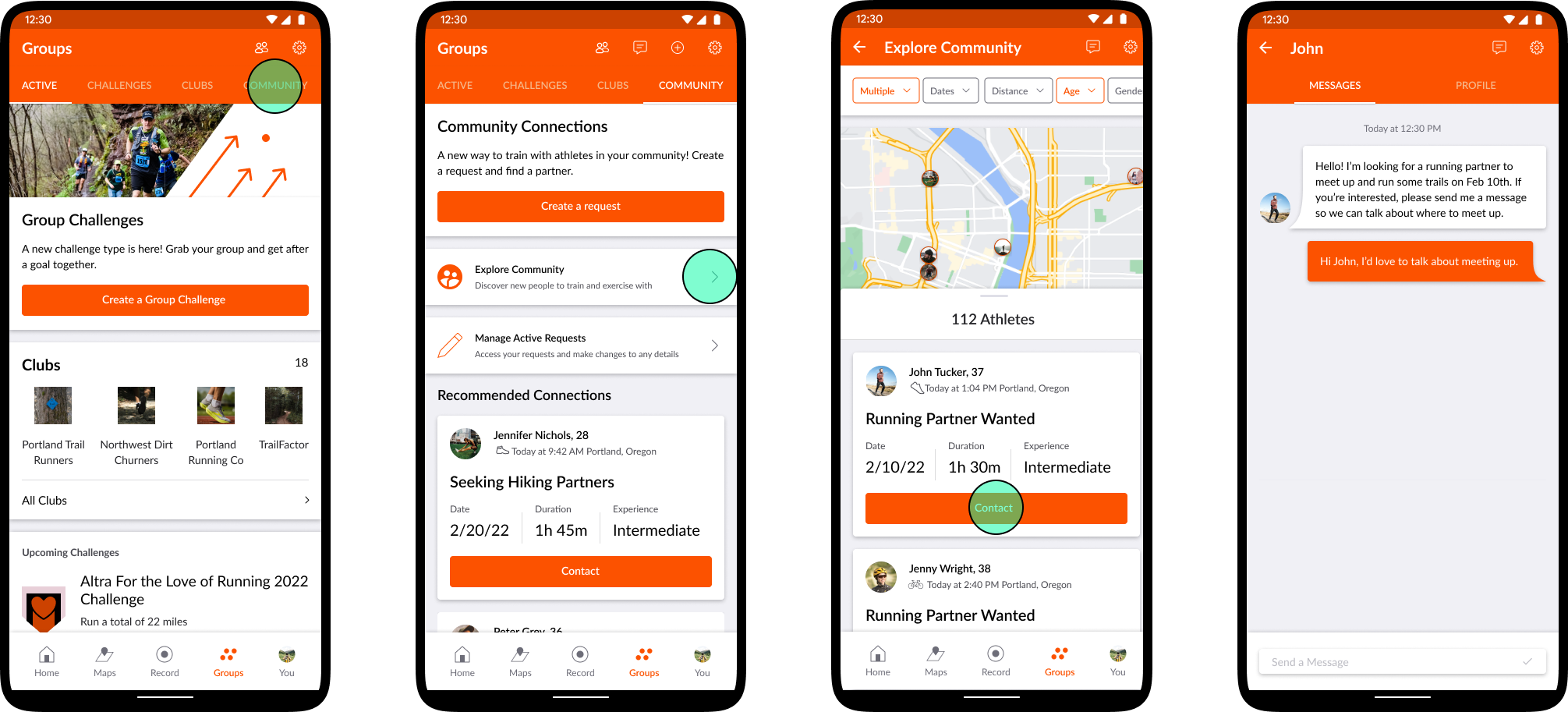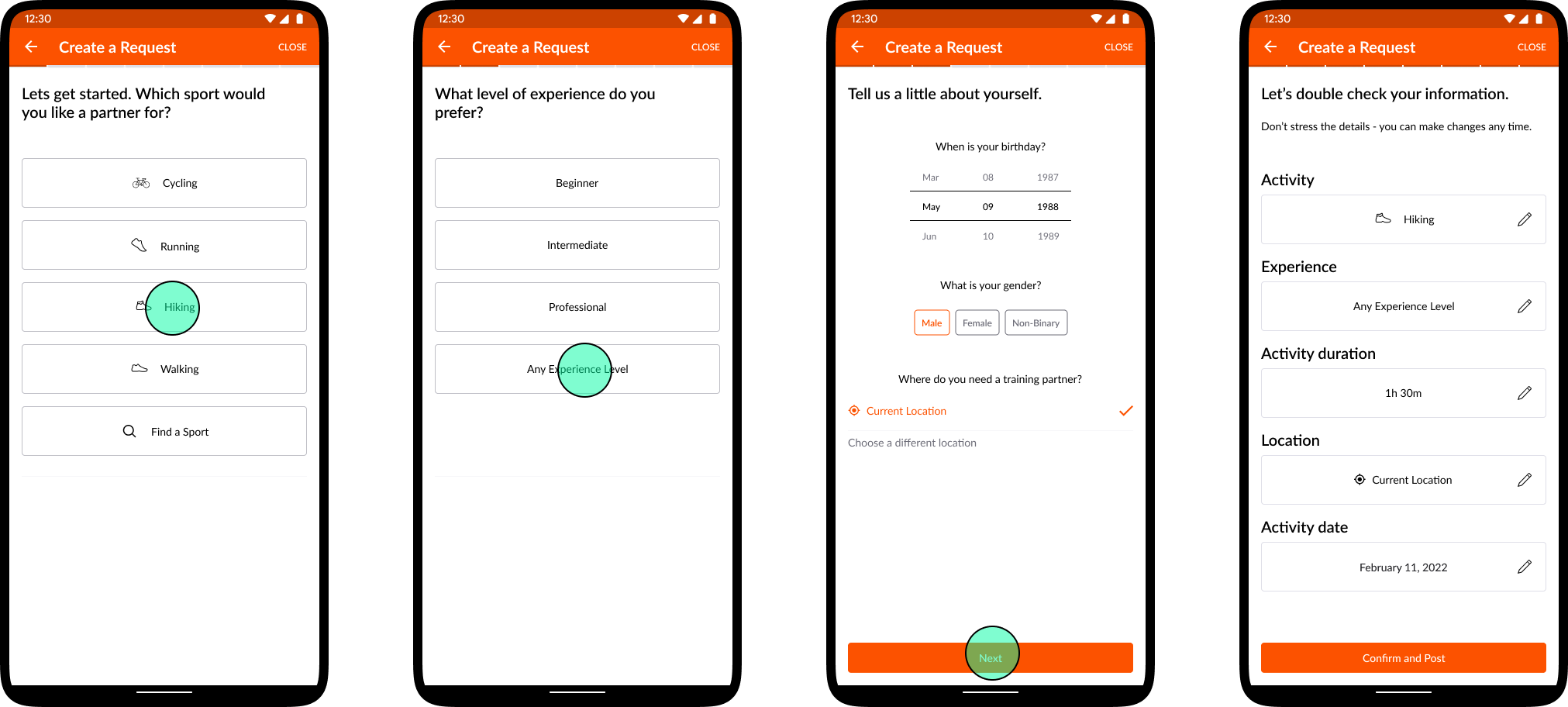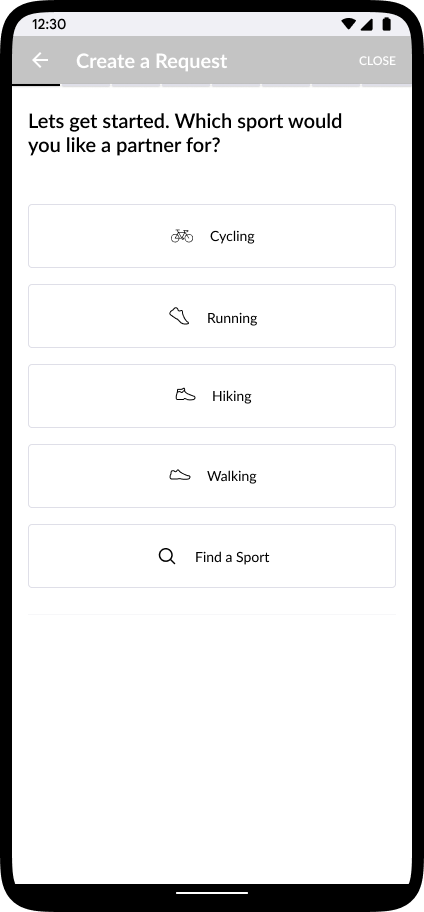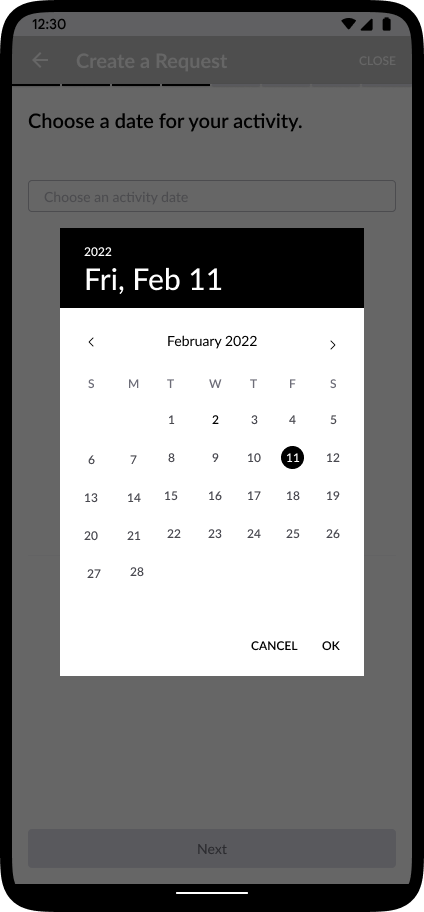Strava
Adding a new feature to bring people together and and make training easier.

Project Type: B2C Fitness
Role: Research, UX/UI Design
Duration: 80 Hours
Project Overview
Strava began as a fitness tracking and social media platform designed for runners and cyclists. It quickly grew into one of the largest fitness communities worldwide. Strava has recently added several new features in an effort to increase social engagement (groups, challenges, local legends, segments, etc), most of which encourage friendly competition between users.
Focusing mainly on competition, felt like a missed opportunity for Strava to increase engagement with the less competitive members of its community. In this case study, I designed a new 'Community' feature that can connect users in person and enable users to connect in a way that is more encouraging and supportive.
The Challenge
Strava is a large and feature heavy platform. How could Strava reliably connect users in person, while seamlessly integrating the necessary components into their current framework?
The Solution
A new social feature that uses existing Strava user data, to make a local connection between two or more users looking to perform a specific activity together.
RESEARCH
Research Plan
Through market research and surveys, I began trying to understand what would happen if Strava introduced this new feature. I would test if my assumptions were true about this filling a specific need in the fitness community.
In order to determine the feasibility of this, I set out to understand:
If this is a service that both Strava users and non-Strava users would have a need for.
The fitness apps people are currently using and the features they have.
What users would want to accomplish with a feature like this, and the concerns and risks involved with implementation.
Market Research
I began by researching the social features of common fitness apps to better understand how people are currently utilizing existing features, and gain insights into where and how Strava may be able to fill a gap. I learned that:
Pretty much all apps on the market allow users to find friends through their current contacts on Facebook, Google, cell phones, etc.
General communication through commenting and 'liking' activities is the standard for engagement through most of these services.
There is a large gap when it comes to allowing users to easily find and create groups or events, where users can meet in person.

User Research
I sent out two different surveys to current users and non-Strava users, with each group receiving 10 responses. I was looking to understand:
How Strava users typically access Strava (app or website).
The frequency that each group meets up for social fitness activities, and where they find them.
Barriers preventing people from using Strava.
Hesitations that may exist with using a feature that assists with connecting people in person.
Research Findings
Convenience
Strava and non-Strava users both found it to be a lot more convenient to use fitness apps on their mobile devices, rather than accessing them through their websites.
Socially Motivated
Nearly 90% of respondents, participate in group fitness activities at least a few times/month. They find these groups through word of mouth and various websites. Most participants desired a way to make this experience easier.
Competition & Privacy
Too much competition was a pain point among all respondents, and the main barrier for non-Strava users to convert to the platform. Privacy was also a major problem and one that Strava has faced for years already. Providing adequate filters, and opt-out opportunities; would be necessary.
DEFINE
Meet The Users
Utilizing my research, I created two different user personas to encompass the vast differences in the needs of our current Strava users, and those that currently utilize other platforms. It would be necessary to consider both points of view when thinking about various ways that the feature could function.


Reframing The Problem
utilizing our personas, we can understand some of the key challenges and frustrations that would need to be addressed.
How can the process of finding groups and individuals to exercise with, be simplified?
How can we minimize fear based hesitations regarding meeting up with strangers?
What can be done to help users simply connect with others that are at a similar skill level with similar interests?
Working Within Strava’s Current Architecture
After some brainstorming and careful analysis of my research, it became clear that the easiest way to help alleviate user concerns, would be to capitalize on the wealth of data that already exists within Strava’s platform. This also meant that this new feature would need to fit seamlessly within the existing app architecture.
I started by creating a map of the Strava phone app (the most common way users currently access their accounts), to help understand where the new feature could most easily be accessed. I then created a user flow to better understand how the new 'Community' feature would work and what screens would be required.


IDEATE
Exploration
When starting wireframes, I focused on how I could make my design as efficient as possible, while still addressing the most common concerns that were addressed during research. The two main functions of the feature would be Creating requests, and searching for and answering requests from other users.
Understanding The Strava Brand
After defining the user flow and necessary screens, I researched Strava’s brand guidelines to gain a better understanding of their design language across their app and website. I wanted the feature to feel entirely native to the app and decrease any barriers to adoption.

PROTOTYPE





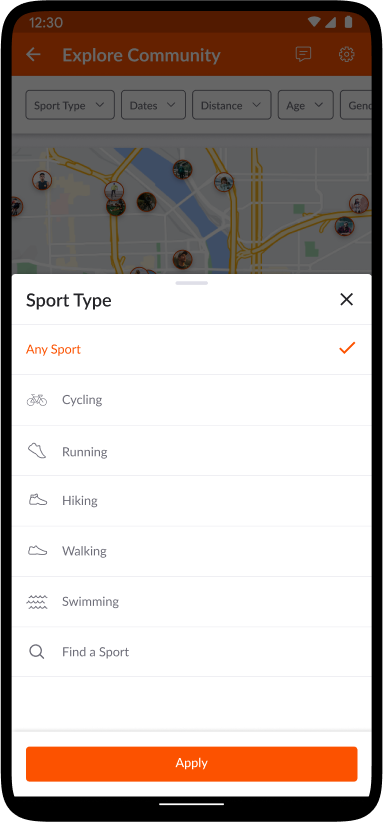





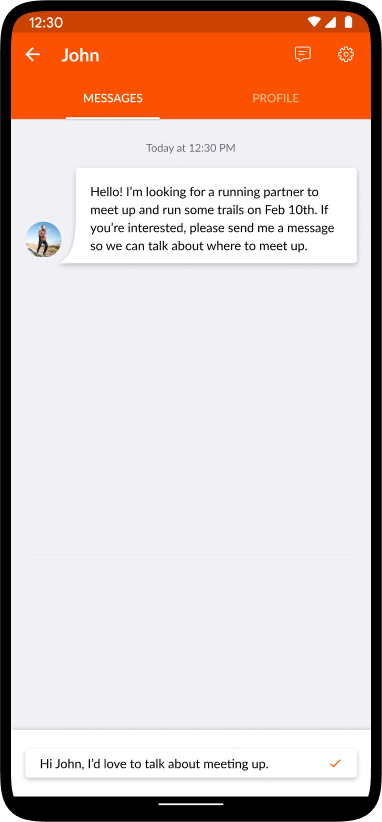

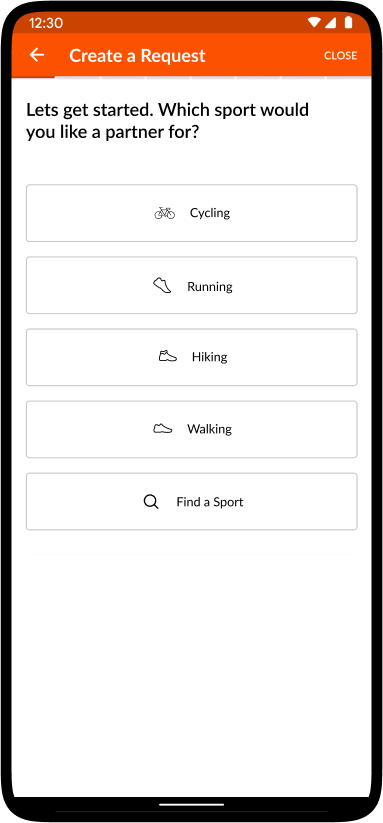




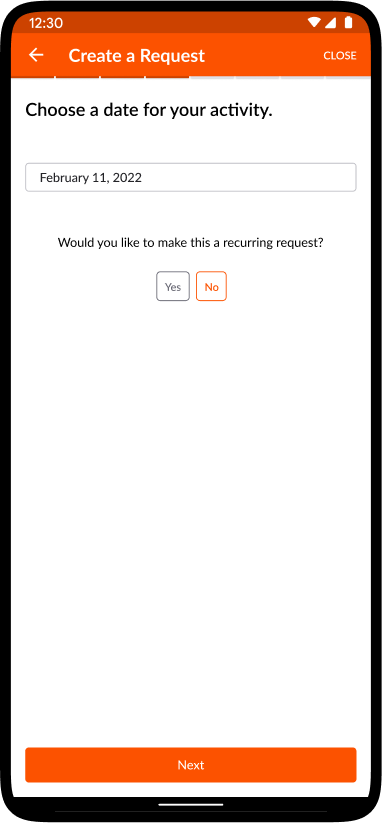


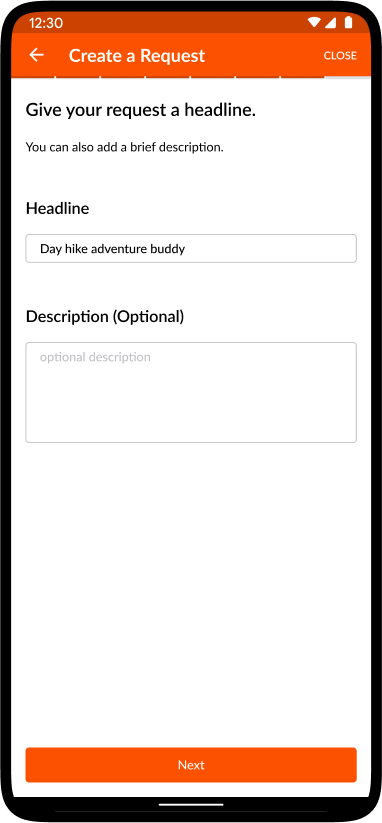

Testing
User Testing Overview
I conducted one round of user testing with 7 participants, consisting of both Strava users and non-Strava users. Participants were instructed to complete the two main functions of the new feature; creating a request and responding to an existing request. My main goal was to discover the following:
That the overall design is intuitive and easy to navigate.
That the filtering and naming systems make sense.
Discover any potential missing or confusing steps in the process of completing either task.
Test the effectiveness of the new feature fitting into the existing Strava framework.
Key Takeaways
Sensible Design
The majority of users thought that the new feature felt native to the app and that it was very easy to navigate.
Filters And Navigation
Overall users found the filtering options to be very intuitive and sufficient. However, there was some confusion with the overall navigation within the new feature. Users were expressing difficulty understanding how to create a request, and where they could make edits.
Simple and Effective
There were a couple of users that expressed a need for the design to be simplified, but the vast majority of users thought that it was very streamlined and easy to navigate through each step of the process.
Priority Revisions
All in all the design was well received, but it was clear that one big change would need to be made. The most frequently reported problem was the inability to find and create requests, and where users would be able to access those requests once created.
My solution for this was to create an extra landing page for the “Community” feature. The landing page would include clear CTAs for both creating and exploring requests, as well as a clear option to make edits to existing requests.
Next Steps
Aside from the feedback mentioned above, the biggest concern with the 'Community' feature was in regards to privacy. I acknowledge that Strava would need to incorporate a way for users to opt-in and out of this type of feature. There would also likely be some kind of verification process upon adoption. These options would likely be added within the existing settings of the Strava app, but it would be interesting to explore other ways to address privacy and safety concerns for the users.
Knowing and understanding the history of privacy concerns within Strava, I feel confident in my design. They have already built out a strong framework for users to be able to adjust visibility of their activities, and options to opt in and out of existing features.
I would also love to see this feature extended to the Strava website as well. The next step in this process would be to revisit some of the other major concerns within the app, and continue with more testing and iteration. I would then begin researching how to seamlessly incorporate the app design into the website architecture.

